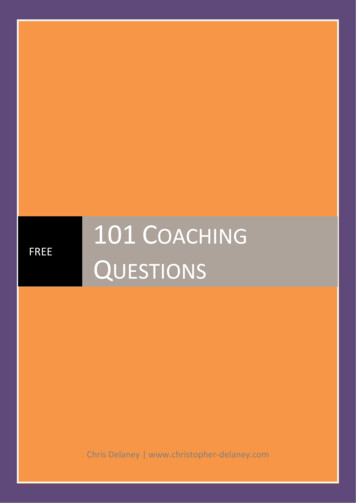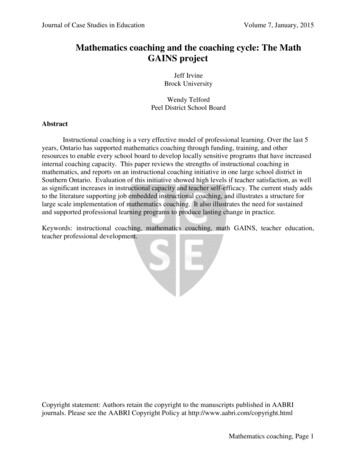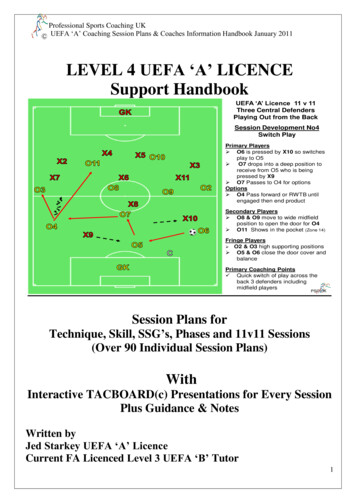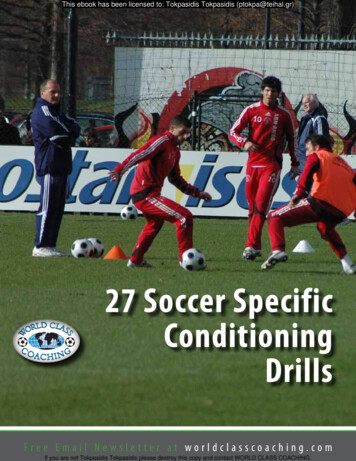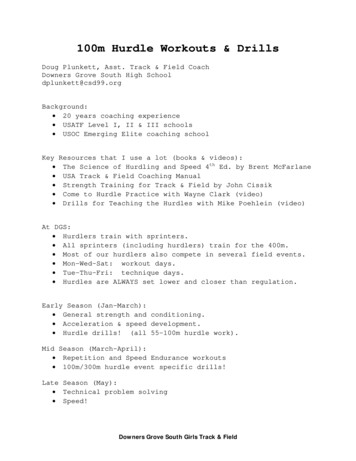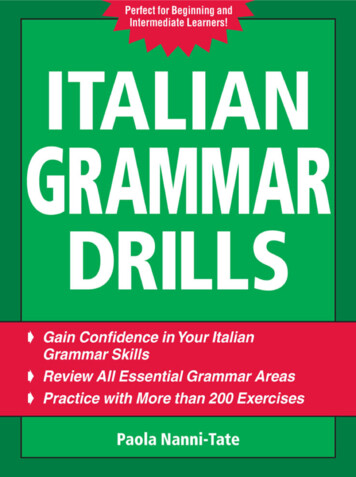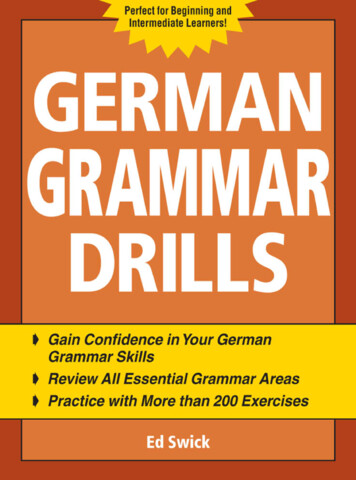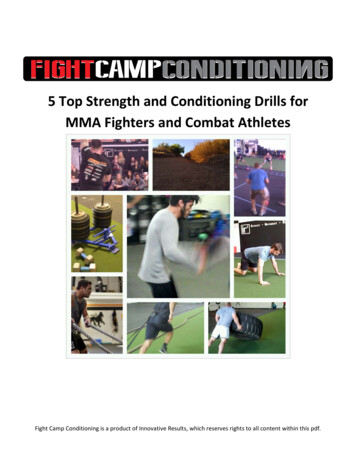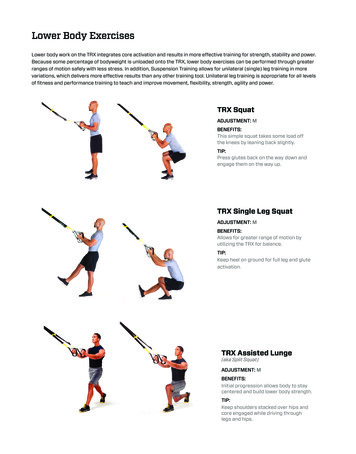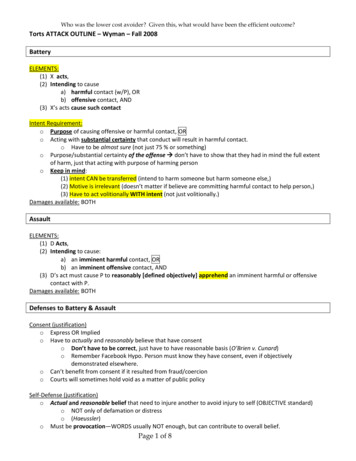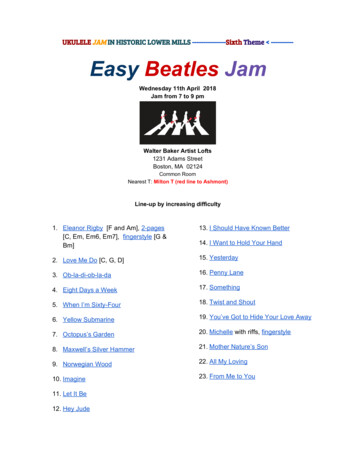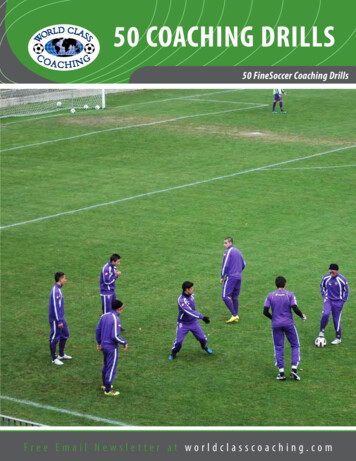
Transcription
50 COACHING DRILLS50 FineSoccer Coaching DrillsFree Email Newsletter at worldclasscoaching.com
COMPLETE SOCCERCOACHING GUIDE50 Soccer Drills, Exercises andTips for Better Coaching Copyright 2011 WORLD CLASS COACHING. All rights reserved.For information, email wccmail@worldclasscoaching.comOr visit our website at www.worldclasscoaching.com WORLD CLASS COACHING - Thousands of Training Sessions at www.worldclasscoaching.com
WELCOMEAs coaches, we know that there are many things that contribute to ayoung soccer player’s success. Our job becomes one of identifying whereindividual players ( as well as our team) are at in terms of their developmentalabilities and then choosing the right activities to help them improve their skills.When I say “good activities” I mean ones that are fundamentally sound, keep thekids moving, develop good habits, and make them think about the game as awhole. This book provides you with 180 activities designed to work on warmingup, dribbling, passing, receiving, communicating, spacing, supporting,possessing, passing, conditioning, heading, goal keeping, finishing, defending,offending, and many other techniques and tactics.I feel these activities are suitable because they’ve been tried and testedby many soccer coaches and teams. You’ll notice that this is a collection ofmaterial gathered from my experience as a coach, my summer soccer campexperiences, talking with other coaches, and from coaches who subscribe to mysoccer newsletter available at finesoccer.com.In addition to specific drills, there are many activities designed to be usedas scrimmages at the end of practice. I highly recommend spending some timeduring or towards the end of your practice to play games that include the skillsyour players were working on. The kids will have more fun and you will besurprised at how the carry over from practicing these skills in a small or adaptedversion of the game improves the players overall real soccer game performance.I hope you find these activities helpful, fun, and effective in achieving yourdesire to have the best team you can have. As you begin to try them, I wouldenjoy hearing your feedback regarding which ones you found most helpful aswell as the ones the kids liked to do the most.Have a great season,Lawrence Fine WORLD CLASS COACHING - Thousands of Training Sessions at www.worldclasscoaching.com
GETTING PRACTICE STARTED QUICKLYWHILE BUILDING TEAM UNITYTo make the most of practice time, getting organized quickly for drills isessential. One thing I’ve noticed is that when players are asked to get into smallgroups for a particular activity friends will always look for friends to practice with,while some of the kids are left out or left to be assigned to groups by the coach.Because I strongly believe that all players should feel a part of the team, here isa trick I use to get going quickly and to build team unity at the same time.I call this method the numbers game. I use it as a season long game.Whenever I call out a number, the players must get into groups of that number assoon as possible. Whoever isn’t in a group “loses”. For example, if there are 16players at the training session and I call out “4” the players will quickly get into 4groups of 4. However, if I call out 3, they will get into 3 groups of 5 and oneperson “loses.” When I first introduce the game, I give the kids some examples ofconsequences for the loser. For example, she might have to do 5 push-ups or 5donkey kicks. Players learn very quickly that whenever they hear me call out anumber that they need to grab whomever is closest to them without regard forwhether they are an old friend or a new friend.This is also a great way to get players to work together with differentteammates throughout a training session or season. It even works in largenumbers ( if you want to split 16 players into groups of 11 and 5, just yell 11 andthose 11 become the first group right away. If a player wants to be in the group of11 they will do so and if they don’t that is her decision. This is a great way to findout who wants to do things because the players will frequently figure out whatyou are thinking with the numbers and will get into the bigger group to participate.Sometimes I will assign players into groups, but most often I will yell outthe number and let the players do it, which saves time and avoids potentialconflicts. Next time you need to break your players into teams, play the numbersgame and see how many potential problems are avoided. WORLD CLASS COACHING - Thousands of Training Sessions at www.worldclasscoaching.com
FineSoccer Drill 75Here is one of the simplest and most commonly played games by coachesof youth teams, “World Cup”.World Cup is a game where a group of players will break off into a bunch ofteams of 2's players each. So, if you have a team of 15 players, you would have7 teams of 2 players each plus one keeper. The server (usually the coach) playsa ball into the middle of the teams and each team tries to get the ball and scoreon the one goal (with a keeper in it).There are a lot of variations to this game. Some people play it where eachteam picks a country that they represent and each time they score a goal, theteam who scored must call out the name of the country they represent (so if theBrazilian team scores, they would yell "Brazil"). This could be a game where thefirst team to score steps off the field and each subsequent team to score stepsoff. The last team on the field loses. Or, you could do it where the first team toscore 5 goals wins (remember, for each ball that is out there it's basically 2 v 12plus a keeper because whichever team has the ball, all of the others are trying tostop them from scoring). Other variations would be to allow more than one ballon the field at a time. Or, you could have the balls served in from different angles(for example, have the ball served in like a corner kick).Playing World Cup encourages players to look to take a chance and hit ashot because the likelihood of getting a perfect shot in that type of game is veryslim so kids are willing to hit a shot the first opportunity they get. The willingnessto hit a shot is one of the qualities that separate the true goal scorer from the restso playing games that encourage this trait will help to develop goal scorers.However, most kids don't see this game as working on developing the habits of atrue goal scorer. The best thing to do is let kids play World Cup (or other gameslike this) and afterwards ask them if they hit any shots in these games that theywouldn't hit in a real soccer game. Almost every one of them will say they did.Emphasize that there are very few "bad" shots in soccer and the only way toscore goals is to take shots. Then, have them go out and play it again. Followthis up with a regular scrimmage and encourage them to take as many shots asthey can. WORLD CLASS COACHING - Thousands of Training Sessions at www.worldclasscoaching.com
Use games like World Cup to develop the goal scorer’s mentality. Then doeverything you can to take this attitude that is developed in these training gamesand transfer it onto full-sided games.FineSoccer Drill 76Working on shape and balance is something that many coaches like to talkabout but many don't actually seem to know how to actually train teams to workon this. Here is a way to work on both offensive and defensive shape at thesame time.First, you need to break the field into thirds as shown in the diagram below.The rules are actually quite simple. You want to play a regular game ofsoccer (if possible, actually play 11 v 11 or if that doesn't work get as manyplayers on the field as you can). A goal counts as 4 points. Anytime the teamwith the ball DOESN'T have a player in each of the three sections, they lose apoint. (the key here is that it shouldn't always be the same players out wide). Asan additional incentive a team can win points by quickly switching the ball. Theway this works is that anytime the ball is in section 1, if the defense has anyplayers in section 3, the attacking team gets a point. If the ball gets switched tosection 3 and the defense has anyone in section 1, the attacking team gets apoint. When the ball is in the middle (section 2), all defensive players must be inthe middle section or the attacking team gets a point (you have to give a 1 WORLD CLASS COACHING - Thousands of Training Sessions at www.worldclasscoaching.com
second period from the time the ball gets played from the outside to the middle togive the defense time to shift).This activity encourages the attacking team to provide proper support withwidth and also it encourages them to switch the ball through the midfield as wellas around the back. Defensively, this works on proper defensive rotation as wellas proper support and balance.The size of the sections can be changed depending upon the numbers youare working with as well as their understanding of the concepts.Some of the variations to consider include rewarding a team for switchingthe ball from one outside section all the way across to the other (this will help ateam switch the ball quickly but will also help them learn when NOT to do it). Forthe more experienced teams, one of my favorite things to add is that no playercan be in either of the two wide sections for more than 5 seconds without theball. This means that if a player is out wide and not being used, she must get outof that section and someone must take her place in that section (or the teamloses a point). If you implement this, the players must understand the roles ofdifferent positions or else it turns into pure chaos.Remember, this activity is best with 7 a side or more and should also bedone after a team has gone through a fair bit of shadow training to understandthe proper responsibilities of the different roles.Give this activity a try the next time you want to work on shape and balance(and as a bonus it's great conditioning).FineSoccer Drill 77Here is a simple possession game that works on possession, defending ingroups, and also taking responsibility.Let's assume you have 15 players at your training session. Set them up in acircle (you could use the center circle for this).Three players start in the middle and the players on the outside are playingone touch keep away. While the players on the outside can move around theoutside of the circle, they may NOT move inside or outside the circle. WORLD CLASS COACHING - Thousands of Training Sessions at www.worldclasscoaching.com
The simple objective is for the players on the outside to keep the ball awayfrom the players in the middle.One problem with possession games such as 3 v 1 or 5 v 2 is that theperson who loses possession of the ball is actually NOT the one who is at fault.Rather, the supporting players didn't do their job properly which results in the lossof possession. The way this game tries to work on this is that if a player losespossession of the ball, not only does she go into the middle, but so does theplayer on each side of her (the three players who were in the middle rotate OUTat this time). This encourages the players around the ball to provide propersupport because if they don't, they will most likely become defenders as a result.The other thing this rule accomplishes is that it encourages the player on the ballto look further than the players next to her. Since we want to encourage ourplayers to keep their head up and look further than the closest player, this is anexcellent way to accomplish it (if the ball was coming to you and you knew thatby playing the ball first time to the player right next to you might result in the lossof possession and you have to go play defense, wouldn't you start looking furtherfirst?).As an added incentive to get the defense working hard (and workingtogether) is that if the offensive players can string together 10 consecutivepasses, it results in an extra turn on defense for the players in the middle. Thismeans that if the players on the circle make 12 successful passes and then aplayer loses possession, the defense stays in for another turn. If the players onthe outside can make 20 successful passes, then the defense gets two extraturns. It is for this reason that the circle must be very small (adjust it for theability of the players as well as the numbers).The great thing about this activity is that it gets quite exciting as the playerstry to keep other players in the middle as long as possible and also startproviding proper support and better decision making.FineSoccer Drill 78This is a different type of version of the popular game “kick out”. Thedifference is that this is more game related and also does a better job of keepingall of the participants involved. WORLD CLASS COACHING - Thousands of Training Sessions at www.worldclasscoaching.com
Start with a restricted space (for 15 players maybe 25 x 25 would do). Ifthere are 15 players have 10 start dribbling soccer balls. The other 5 are workingindependently trying to win a ball from one of the 10 who started with a ball. If aplayer wins a ball, she tried to keep it and the player who lost the ball can try towin that ball back or to go after someone else's ball. At the end of a predetermined time period, the players who end up NOT having a ball lose.This activity works on dribbling, moves, shielding, conditioning, field vision,and defense. Plus, kids will have a blast playing it.Consider playing this game 5 times for 2 minute periods each and keeptrack of the number of times each player ends up with a ball. This could giveyou, and the team, an idea of who is best at both holding onto the ball as well aswho works the hardest.One thing to consider is to keep changing the time periods or else smartplayers might allow themselves to lose the ball early and only work the last 30seconds or so. If they don't know when the game might end, they have to workthe whole time (however, the time must be pre-determined or else it's easy
young soccer player’s success. Our job becomes one of identifying where individual players ( as well as our team) are at in terms of their developmental abilities and then choosing the right activities to help them improve their skills. When I say “good activities” I mean ones that are fundamentally sound, keep the kids moving, develop good habits, and make them think about the game as a .
